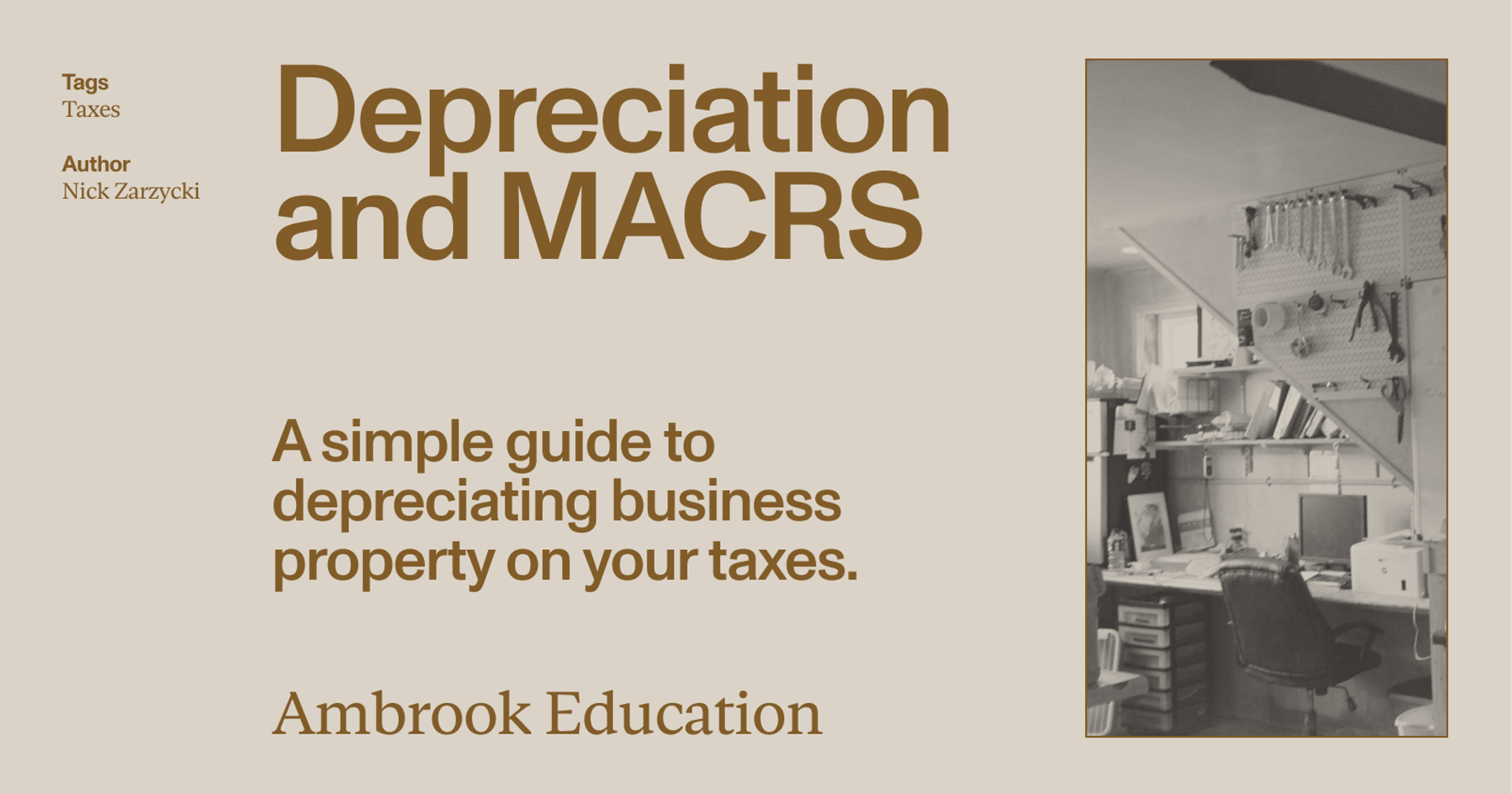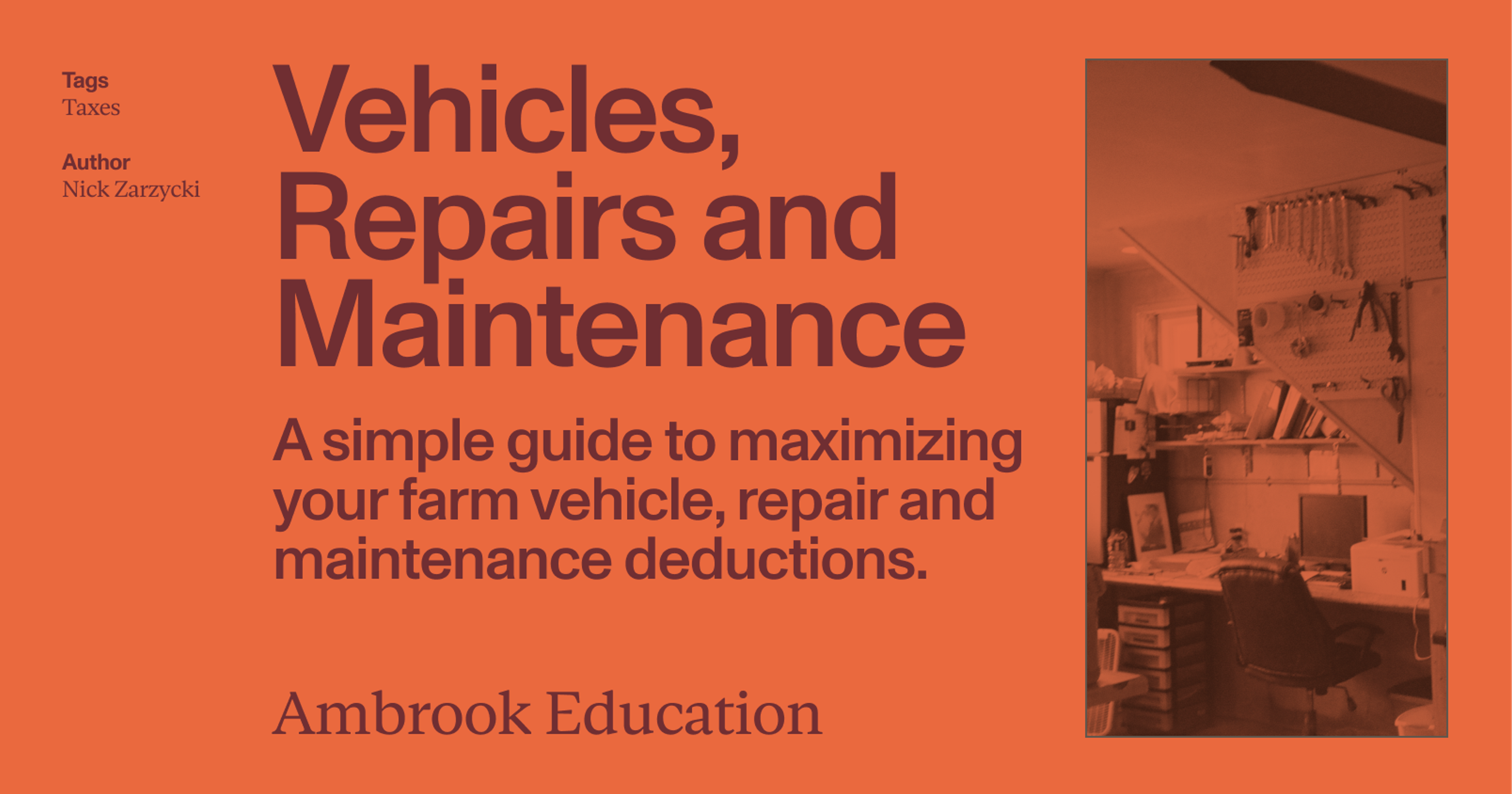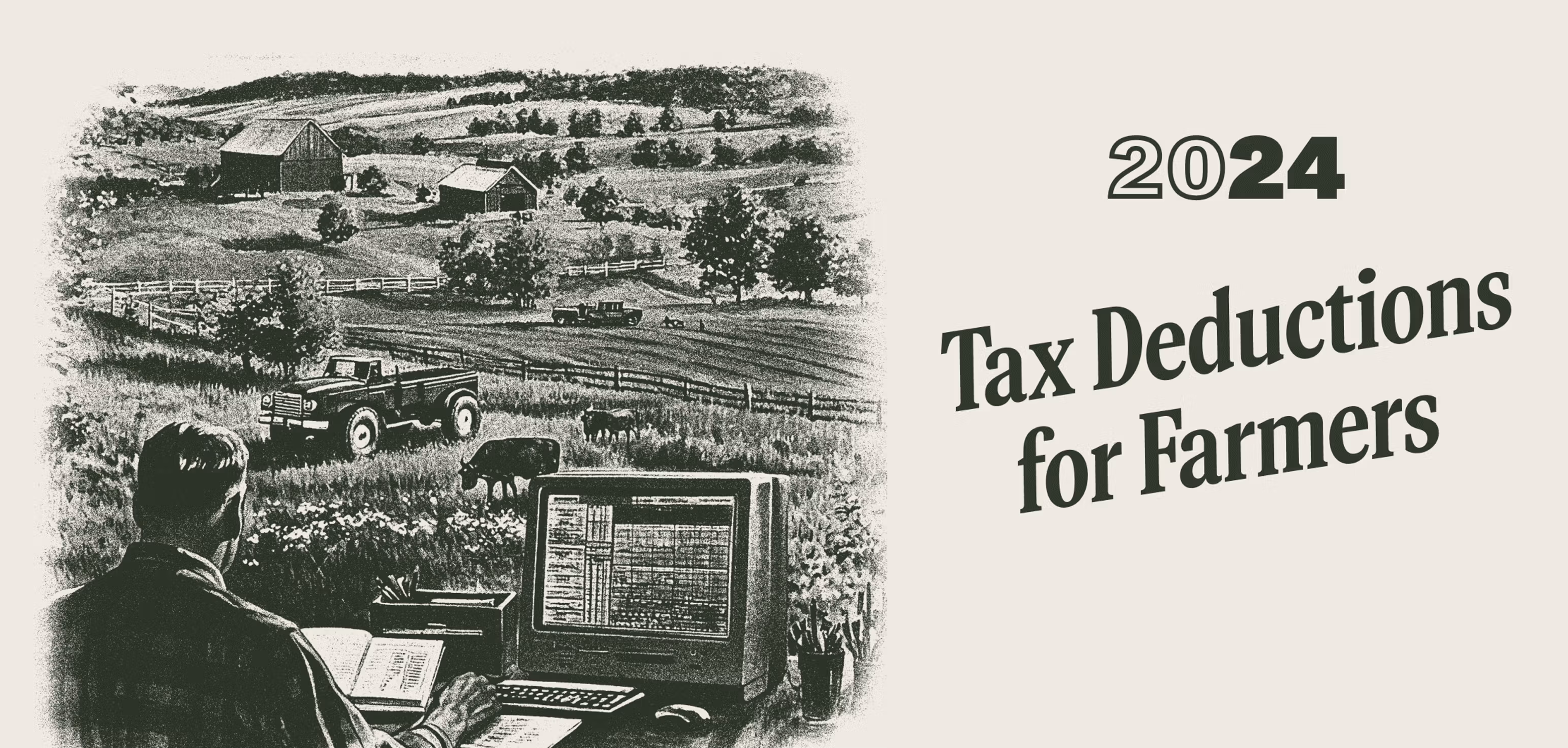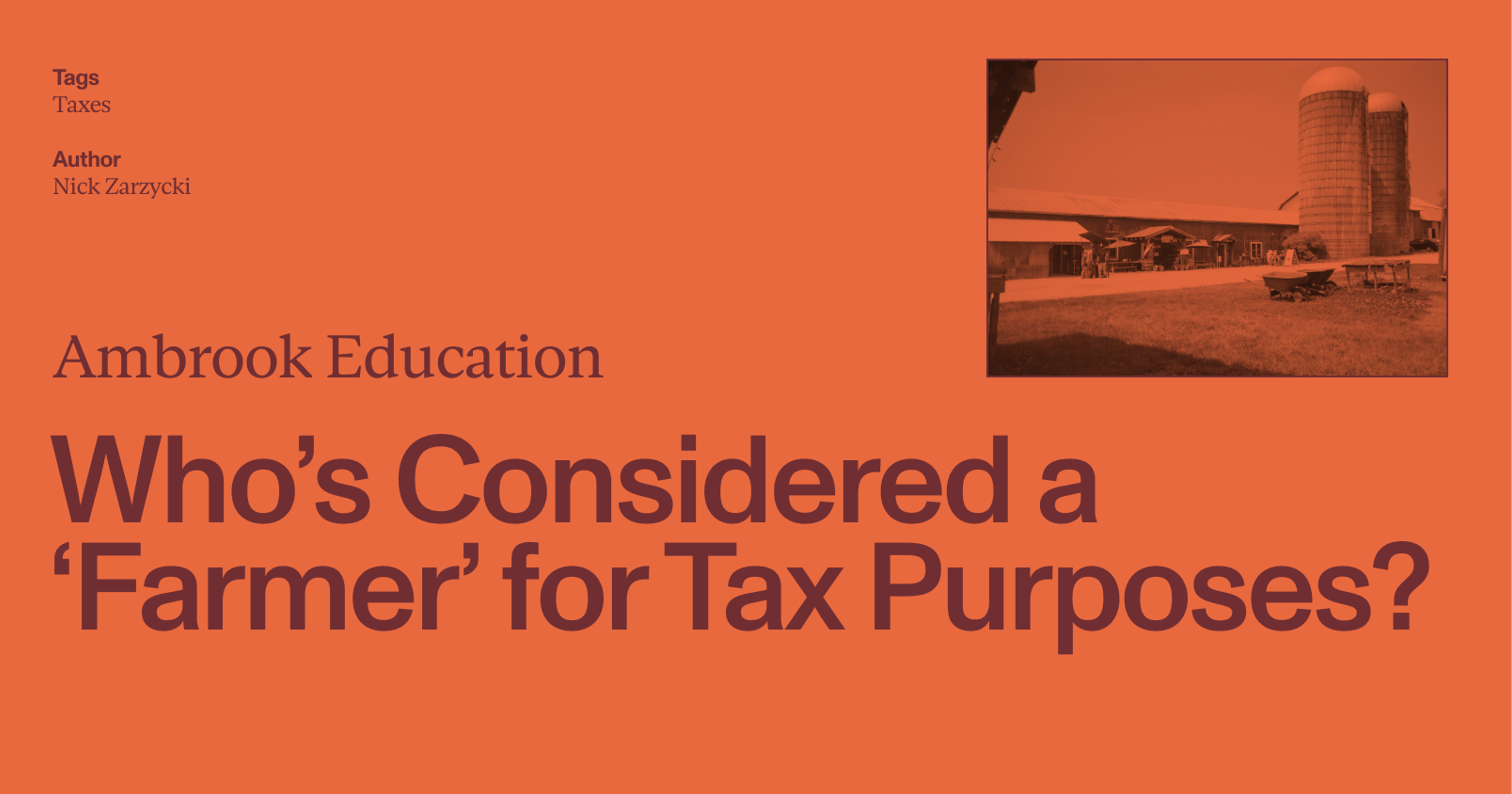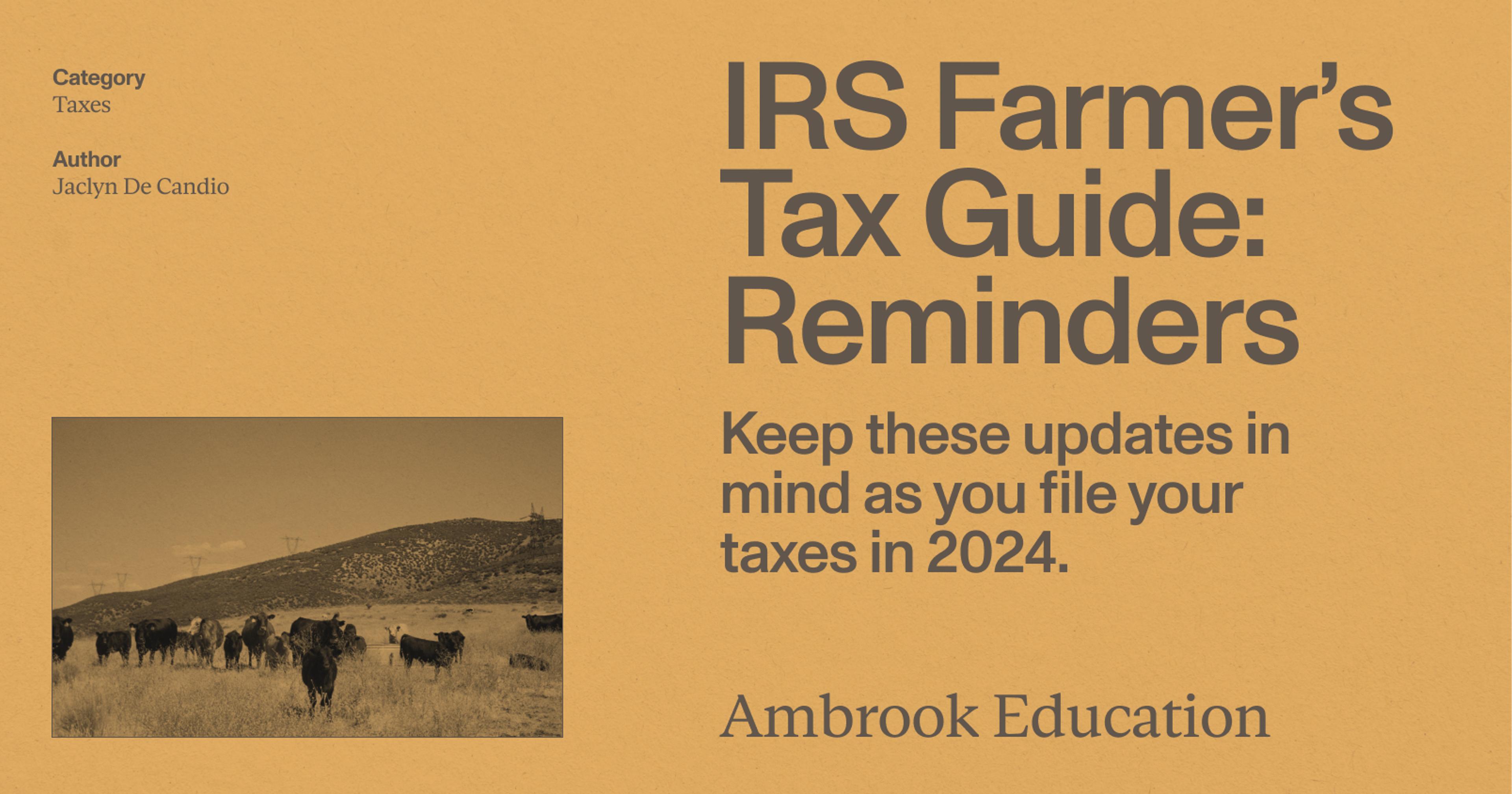Some expenses have to be depreciated on your taxes, which can get complicated. Here’s how to get started.
Many of the expenses your business incurs in its day-to-day operations like repairs, supplies, overhead and wages can be deducted or “written off” to lower your tax bill. But expenses that benefit your business for more than one year like machinery, equipment and buildings usually can’t be deducted, and must be ‘depreciated’ or spread out and deducted over multiple years instead.
Because of the sheer number of different depreciation systems and methods available to farmers, depreciating farm assets can get complicated fast. Here’s what you’ll need to know before filing Form 4562, the tax form used to claim depreciation.
What is depreciation?
Whether it’s chicken feed, office supplies, or wheat threshers, most of the inputs a business spends money on are ‘used up’ over a period of time. To encourage economic activity, the tax code allows businesses to deduct some of these expenses on their tax returns.
For expenses that are used up within one year, deductions are simple: you write off their entire cost in one go on your annual tax return. For machinery, equipment, buildings, and other capital expenses that take longer than one year to ‘use up’ due to wear and tear, however, depreciation is used to recover those costs instead.
Read More: An Introduction to Tax Deductions for Farmers
Which expenses must be depreciated?
Most assets with a useful life of more than one year must be depreciated. Common examples include machinery, equipment, livestock purchased for draft, breeding, or dairy purposes, and structures like barns, greenhouses, irrigation systems, and water wells.
If any of these expenses are placed in service and disposed of in the same year, however, they must be deducted in that year instead.
Which expenses aren’t depreciated?
Property held for sale to customers and inventory like livestock purchased for resale isn’t depreciated, because technically these are assets you’re holding onto for your customers, not for your business.
Land is never depreciated because land doesn’t “wear out” the same way other assets do. Land-related costs like clearing, grading, planting, and landscaping also aren’t depreciated.
Repairs vs. improvements
Sometimes there’s a fine line between deductible and depreciable expenses. For example, repairs and maintenance are often deductible, however if an expense ‘improves,’ ‘betters,’ or ‘adapts’ farm property to some new or different use, you might have to depreciate it.
Replacing a few fence posts is a deductible expense. According to the tax code, however, replacing the entire fence or upgrading it in some way creates a new asset that must be depreciated instead.
Section 179 and ‘bonus depreciation’
Before depreciating their expenses, many businesses will take advantage of a special deduction called Section 179, which allows them to deduct some or all of the cost of assets in the first year that they’re placed in service.
This deduction can’t exceed your total annual income, up to a limit of $2,500,000 in 2025, and you can’t use it for assets you purchased from someone you’re related to or assets with a useful life of longer than 15 years.
‘Additional first-year depreciation’ (AFYD) or ‘Bonus Depreciation’ can also be claimed after reaching the Section 179 limit, which is an additional deduction that allows taxpayers to write off the cost of certain qualifying assets.
Read more: An Introduction to Section 179 and Bonus Depreciation
What is MACRS?
The Modified Accelerated Cost Recovery System (MACRS) is what most taxpayers must use to depreciate their property. MACRS can get complicated: to calculate depreciation under it, you must determine five different factors:
Basis amount
Placed-in-service date
Depreciation system and method
Recovery period
Convention
To help illustrate this, let’s use the example of Marc the cattle rancher, who has just purchased a piece of used farm equipment for $100,000 and needs to figure out how to depreciate it.
1. Basis Amount
The basis amount is the cost of the asset you’re depreciating, which can include additional fees besides the initial purchase price, like sales tax, freight charges, and installation.
This amount must be reduced by any tax credits or deductions claimed on the asset, including section 179 expense deductions. In our example, the basis amount for Marc’s used farm equipment is $100,000.
2. Placed-in-Service Date
You can only start depreciating an asset once you’ve placed it in service for use in your trade or business. It isn’t always obvious when exactly this occurs, but the rule is that the asset should be “ready and available for a specific use.”
For example, if Marc sent the seller a $100,000 wire payment for the used farm equipment last year, but the equipment wasn’t delivered to his farm until this year, he would begin to depreciate the equipment this year.
If an asset arrives unassembled or otherwise not ready for use, it shouldn’t be depreciated until it is ready. If Marc purchases new equipment this year and it arrives on his farm unassembled, and he doesn’t assemble the equipment until next year, he shouldn’t start depreciating it until next year, because that’s when it is “ready and available for a specific use.”
3. Depreciation System and Method
MACRS lets you choose between two different depreciation systems: the General Depreciation System (GDS) and the Alternative Depreciation System (ADS).
GDS contains three different depreciation methods, and ADS contains one, for a total of four different depreciation methods to choose from:
The 200% declining balance method over a GDS recovery period
The 150% declining balance method over a GDS recovery period
The straight line method over a GDS recovery period
The straight line method over an ADS recovery period
What’s the difference between ‘straight line’ and ‘declining balance?’
This refers to how much an asset is depreciated each year.
Under straight line depreciation, it’s the same amount every year, which means that if you chart total depreciation on a graph, it forms a straight line.
Under declining balance, on the other hand, depreciation is higher in earlier periods and lower in later periods, which means the depreciation graph is curved, with a steeper slope in earlier years and a shallow one in later years.
While straight and declining balance depreciation can be calculated manually, it’s often easier to simply consult the MACRS Percentage Tables in Appendix A of Publication 946.
Depreciation in action
Let’s go back to our example with Marc.
According to the recovery period table in the next section (see below), the recovery period for used farm equipment under GDS is seven years.
If Marc uses the 200% declining balance method, according to Table A-1 in Publication 946, his depreciation percentage in year 1 will be 14.29%.
That means his first year depreciation will be:
$100,000 x 14.29% = $14,290
If Marc uses the 150% declining balance method, according to Table A-14 in Publication 946, his depreciation percentage in year 1 will be 10.71%.
That means his first year depreciation will be:
$100,000 x 10.71% = $10,710
If Marc uses the straight–line GDS method, depreciation will be divided evenly over each of the seven years:
$100,000 / 7 years = $14,286
4. Recovery Period
The recovery period is simply the number of years you depreciate something over, and it’s determined by whether you use GDS or ADS.
The table below (Table 7-1 from chapter 7 of the IRS’s farm tax guide) lists the recovery periods under GDS and ADS for some common farm assets, and a complete list can be found in the Table of Class Lives and Recovery Periods in Appendix B of Publication 946:
Farm Property Recovery Periods (In Years)
| Assets | GDS | ADS |
|---|---|---|
| Agricultural structures (single purpose) | 10 | 15 |
| Automobiles | 5 | 5 |
| Calculators and copiers | 5 | 6 |
| Cattle (dairy or breeding) | 5 | 7 |
| Communication equipment | 7 | 10 |
| Computer and peripheral equipment | 5 | 5 |
| Drainage facilities | 15 | 20 |
| Farm buildings | 20 | 25 |
| New farm machinery and equipment | 5 | 10 |
| Used farm machinery and equipment | 7 | 10 |
| Fences (agricultural) | 7 | 10 |
| Goats and sheep (breeding) | 5 | 5 |
| Grain bin | 7 | 10 |
| Hogs (breeding) | 3 | 3 |
| Horses (age when placed in service) | ||
| Breeding and working (12 years or less) | 7 | 10 |
| Breeding and working (more than 12 years) | 3 | 10 |
| Racing horses (more than 2 years) | 3 | 12 |
| Horticultural structures (single purpose) | 10 | 15 |
| Logging machinery and equipment | 5 | 6 |
| Nonresidential real property | 39.5 | 40 |
| Office furniture, fixtures, and equipment (not calculators, copiers, or typewriters) | 7 | 10 |
| Paved lots | 15 | 20 |
| Residential rental property | 27.5 | 40 |
| Tractor units (over-the-road) | 3 | 4 |
| Trees or vines bearing fruits or nuts | 10 | 20 |
| Truck (heavy duty, unloaded weight 13,000 lbs. or more) | 5 | 6 |
| Truck (actual weight less than 13,000 lbs.) | 5 | 5 |
| Water wells | 15 | 20 |
As you can see, ADS allows taxpayers to depreciate their assets over a longer period of time. It also slows down depreciation because it requires the straight-line method.
While GDS is generally good for taxpayers looking to frontload and maximize their depreciation in early years, ADS is a good option for businesses that wish to spread depreciation out more evenly over more years.
If Marc decides to use ADS for the $100,000 piece of used farm equipment, he’d use a recovery period of ten years instead of seven, which means his first year depreciation would be:
($100,000 / 10 years) / 2 = $5,000
5. Convention
Three different ‘averaging conventions’ determine when exactly the recovery period for an asset begins and ends, which can affect how much you depreciate in the first year. (They also determine which percentage table you consult when searching for your applicable depreciation rate in Appendix A of Publication 946.)
Under the half-year convention (which is what we’ve been using for Marc) taxpayers are allowed to deduct half of the depreciation calculated for the first year.
The mid-quarter convention is used for taxpayers that purchase forty percent or more of the assets they’re depreciating in the final quarter of the year.
The mid-month convention is used for residential and commercial buildings. Because those assets must be depreciated using the straight line method, the mid-month amount is simply one half of the depreciation calculated for the first month.
Which tax form do I use for depreciation?
Taxpayers must use Form 4562: Depreciation and Amortization to perform the calculations above and claim their deduction for depreciation.
Form 4562 is also used to claim a section 179 expense deduction and bonus depreciation. (See the instructions for Form 4562 for a detailed overview.)
Kickstart your tax planning with Ambrook
Ambrook’s category tags correspond directly to each line on Schedule F, making it easy to compare your tax return to your records and saving you hours of work during tax season.
With time-saving bookkeeping automation features, automatically-generated financial reports, streamlined bill pay and invoicing, and other powerful accounting and financial management tools, Ambrook doesn’t just make filing your taxes easy: it takes the guesswork out of running your business. Want to learn more? Schedule a demo today.
Want to learn more about Ambrook?
This resource is provided for general informational purposes only. It does not constitute professional tax, legal, or accounting advice. The information may not apply to your specific situation. Please consult with a qualified tax professional regarding your individual circumstances before making any tax-related decisions.

